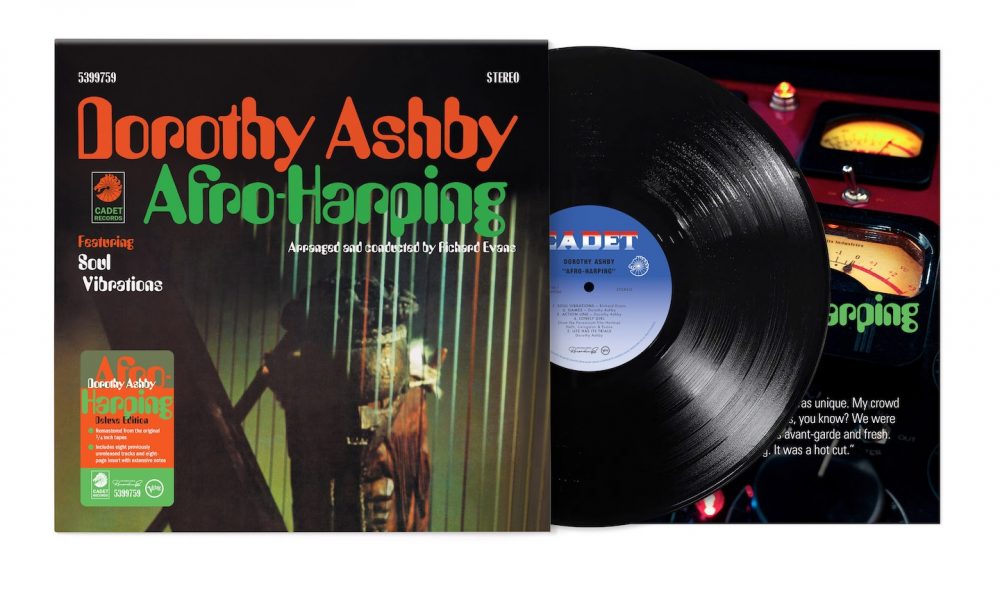Dorothy Ashby’s Seminal ‘Afro-Harping’ Set To Be Reissued
This Deluxe Edition includes eight previously unreleased bonus tracks.

Dorothy Ashby’s Afro-Harping is set to be reissued by UMR and Verve Records on September 27. This new collection will include eight previously unreleased tracks, and will arrive on 2LP with a gatefold and a deluxe CD.
Additionally, the album was remastered from the original ¼ inch tapes by Alex Wharton at Abbey Road Studios. Afro-Harping is an extraordinary listen filled front-to-back with sumptuous and hypnotic grooves. Potent African percussion, soulful orchestrations, in-the-pocket rhythms and Dorothy’s virtuosity have made it one of jazz’s most sought after records. Tracks from the collection have also been sampled sampled by Pete Rock, Kendrick Lamar, J Dilla, Madlib, Flying Lotus, and many others.
Bonus tracks include alternate takes from the surviving four-track session reels, including a triumphant rendition of the single, “Soul Vibrations,” extended versions of the title track, an extended take of Freddie Hubbard’s “Little Sunflower,” and two jazzy readings of “Theme from Valley of the Dolls.”
The LP is housed in a gatefold sleeve with black poly-lined inner sleeves and an illustrated eight-page insert featuring detailed notes by Seán Casey of Shindig! Magazine, whose investigative work has unearthed new information about the making of Afro-Harping. The CD is housed in a digipack with 28-page booklet.
A bonafide cult classic originally released in 1968, Afro-Harping is the first of a rarefied and outstanding trilogy of mesmerizing soul-jazz albums by Dorothy Ashby that were produced for Cadet records (Chess) by Richard Evans between 1968 and 1970.
Additional flavor on the reissue is provided by some of the in-studio “atmosphere” that accompanies the bonus cuts. The session reels also featured the voices of Dorothy, Evans, and others: encouragement, laughter, a brief burst of beatboxing and a mild disagreement over how many bars had been played, for example.
In many cases these elements have been left where they were found, the better to illustrate the experience of being in the room with Dorothy and some of the Chicago’s finest musicians in the winter of ’68.












